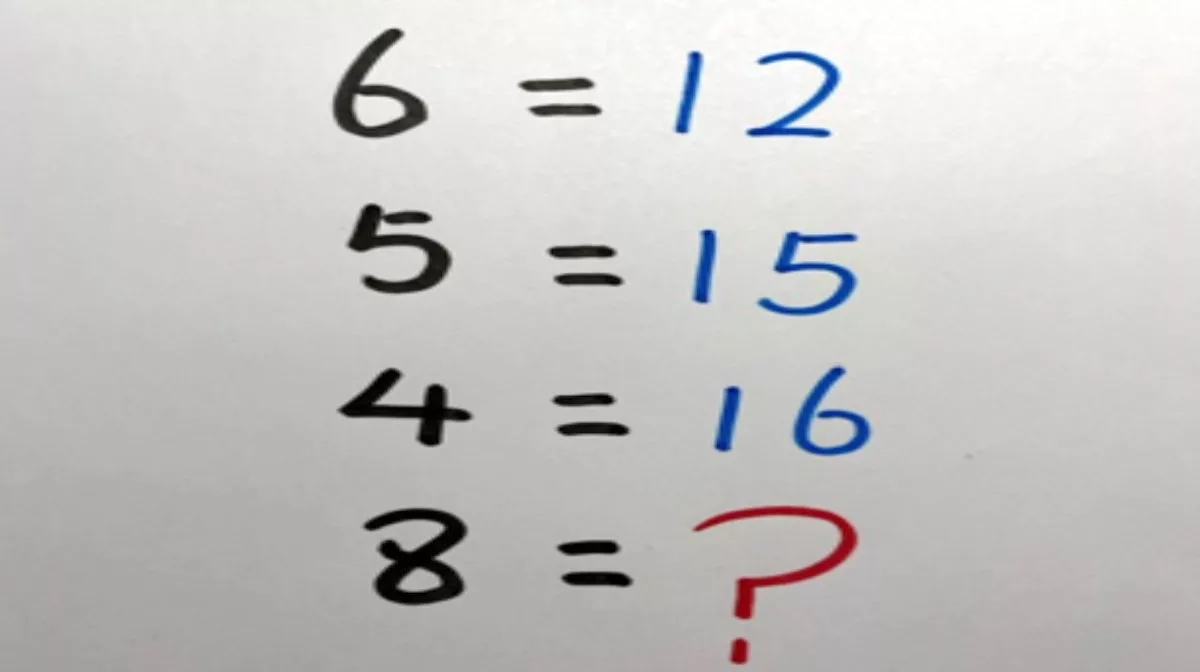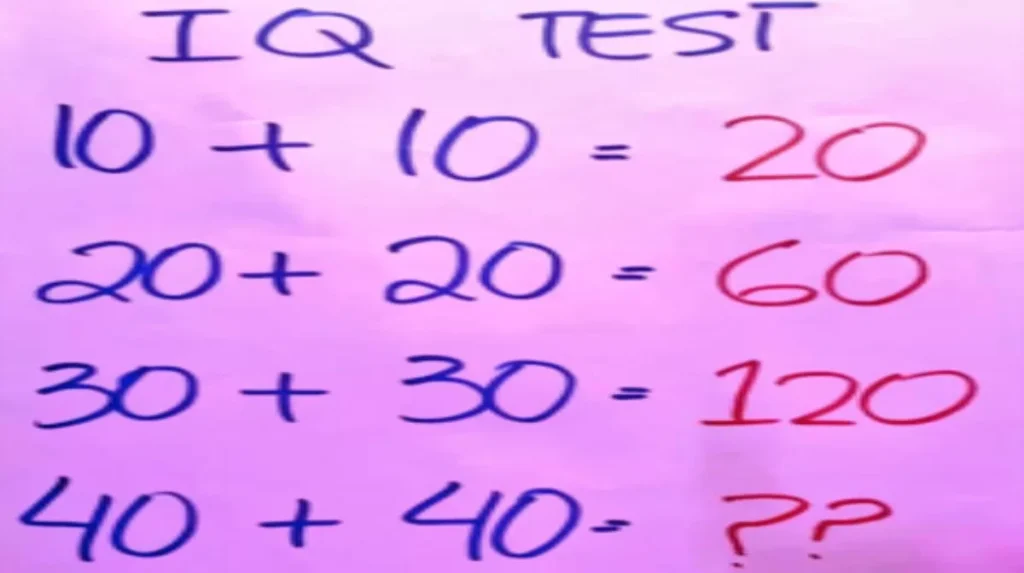Can you solve this tricky math puzzle?
Math puzzles hold a special place in the hearts of enthusiasts. These complex challenges not only stimulate the imagination but also test logical reasoning and analytical skills in unexpected ways. If you’re looking for a new way to exercise your brain, we have just the thing for you.
Recently, a difficult puzzle was shared on social media, arousing curiosity and sparking lively discussions among users.
The riddle that makes you think
Here is the statement that was shared:
“IQ test: 10 + 10 = 20, 20 + 20 = 60, 30 + 30 = 120, 40 + 40 = ??”
At first glance, this appears to be a simple addition problem.
However, a closer examination reveals a hidden structure that needs to be deciphered, and the solution is not as straightforward as it seems.
Many users tried their luck, only to realize that traditional math rules were insufficient to crack this riddle.
Another riddle that puzzled internet users
This isn’t the first time a puzzle of this type has captured attention.
Earlier, another riddle sparked intense discussions:


Once again, users shared various approaches: some tried to apply multiplication rules, while others searched for a hidden logic in subtraction or addition.
Regardless of the approach, it became clear that to succeed, one had to think differently and step outside the box.
Why puzzles are so popular online
Whether it’s optical illusions or math puzzles, the enthusiasm for brain teasers online remains strong.
These challenges offer more than just a distraction: they engage critical thinking and encourage problem-solving in a way that few daily activities do.
If you think you’re up for the challenge, why not try to solve these riddles?
And if you get stuck, don’t worry: the true enjoyment often lies in the process and reflection, more than in the answer itself.
Here is the solution we found:
Riddle:
“IQ test: 10 + 10 = 20, 20 + 20 = 60, 30 + 30 = 120, 40 + 40 = ??”
At first glance, this sequence appears to be simple addition. However, a more careful reasoning reveals that another logic is hidden.
Let’s analyze step by step:
10 + 10 = 20: Here, the addition is correct. No anomaly.
20 + 20 = 60: Normally, 20 + 20 = 40, but here we get 60, indicating an additional operation.
30 + 30 = 120: Normally, 30 + 30 = 60, but we have 120, which is double of 60.
We notice that:
For 20 + 20, after adding (20 + 20 = 40), we add 20 more to reach 60.
For 30 + 30, after adding (30 + 30 = 60), we double the result to arrive at 120.
Hence, the apparent rule is: perform the standard addition, then add a multiple of the initial number.
Let’s test this hypothesis:
20 + 20 = 40, then 40 + 20 = 60 (adding 20)
30 + 30 = 60, then 60 + 60 = 120 (adding 60, or 30 + 30)
This seems more like: after the standard addition, we again add the result of the previous addition.
Now, let’s look at 40 + 40:
- 40 + 40 = 80
- 80 + 80 = 160
So, 40 + 40 = 160.
Answer: 160
And remember, if you’d rather not continue enjoying puzzles and challenges, definitely don’t click here.

